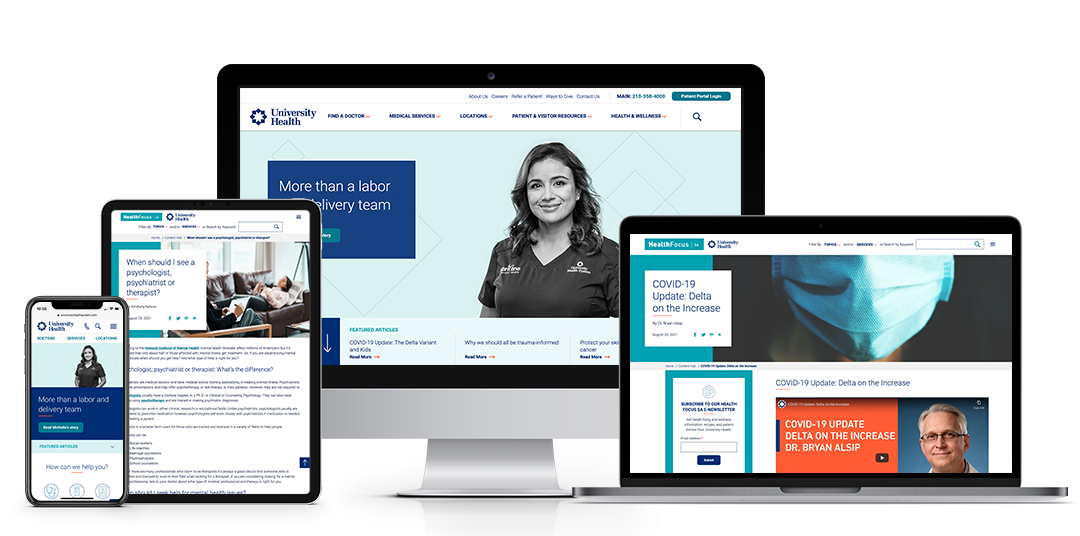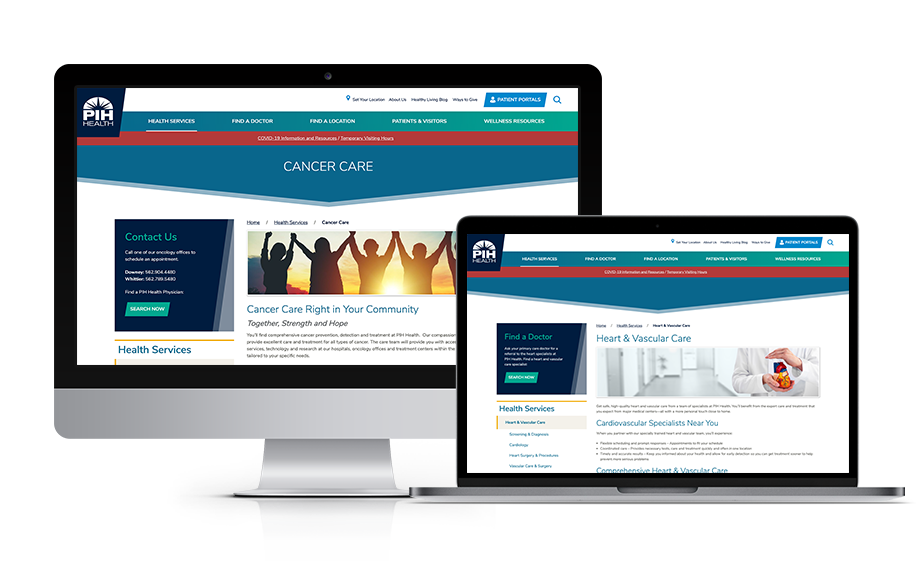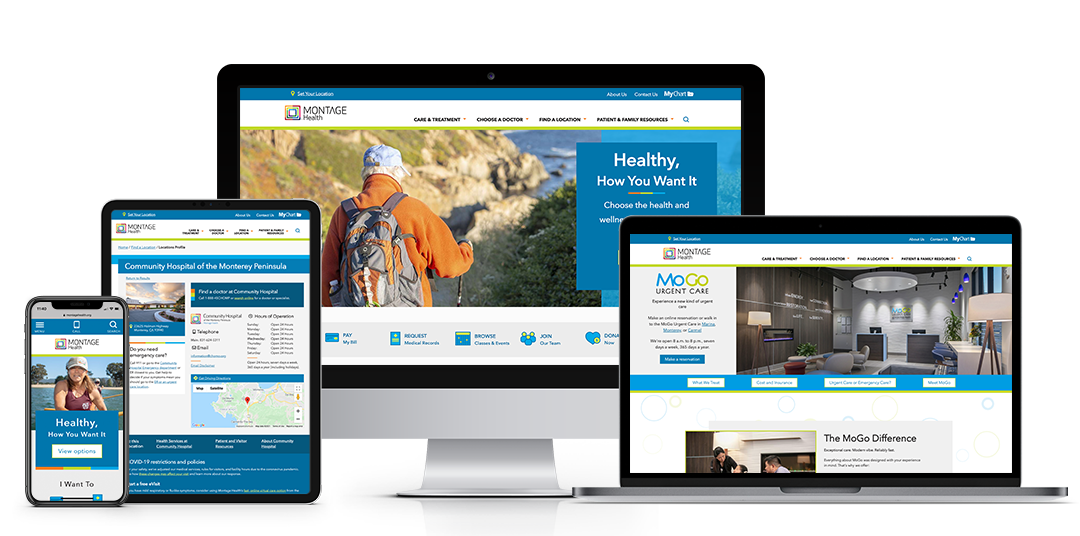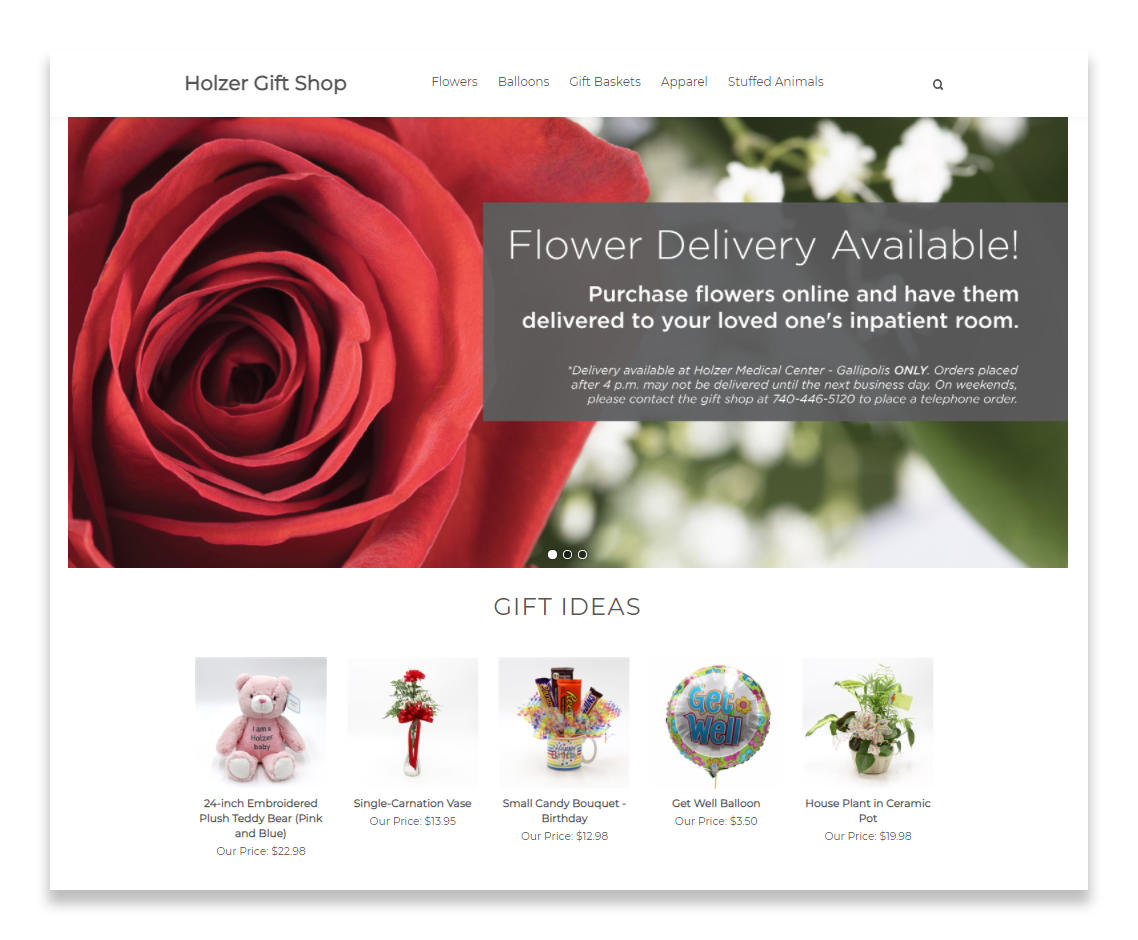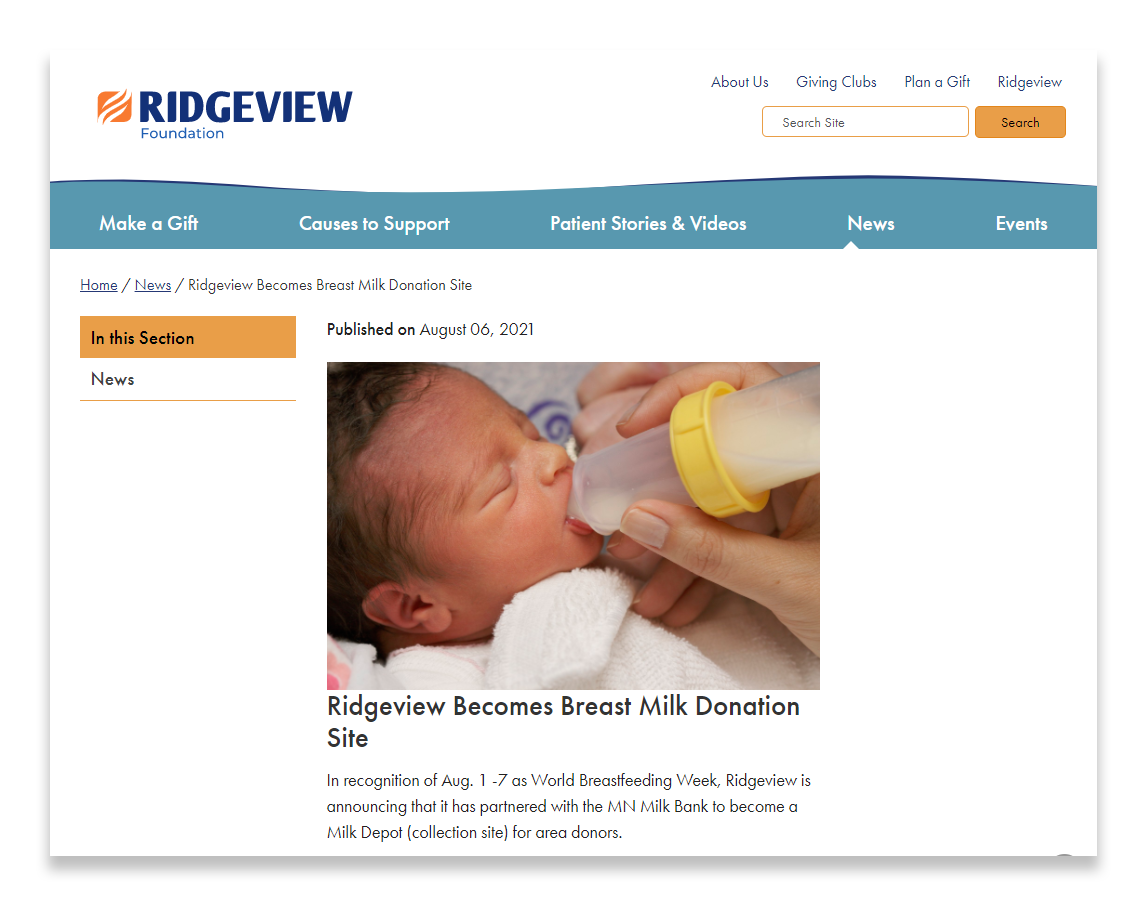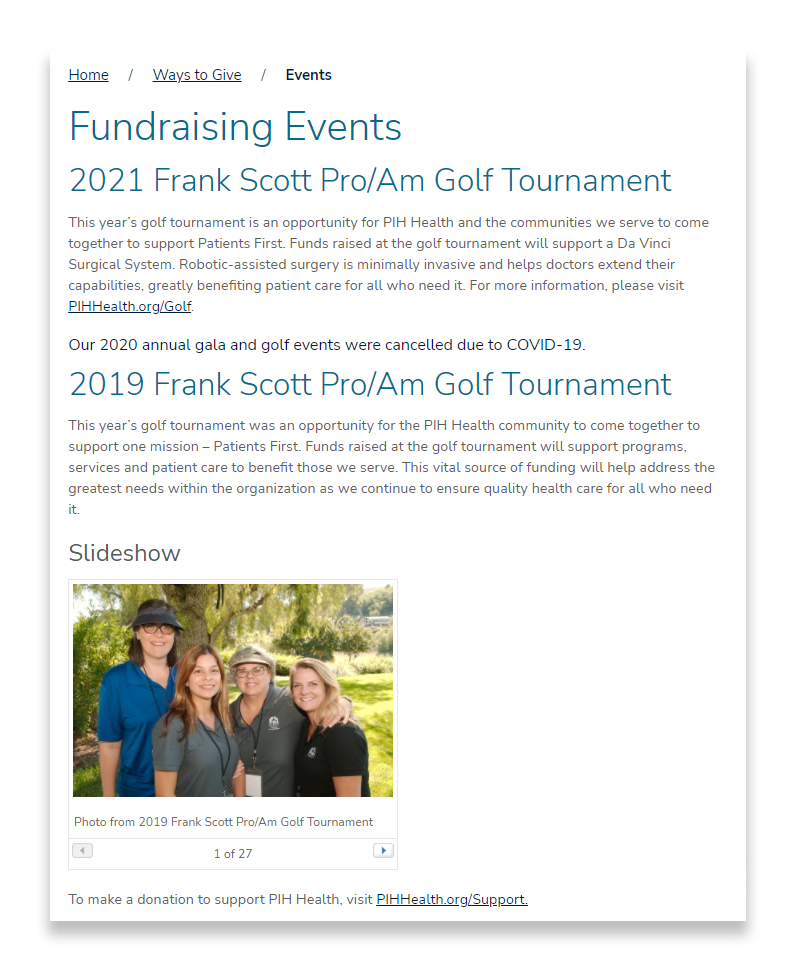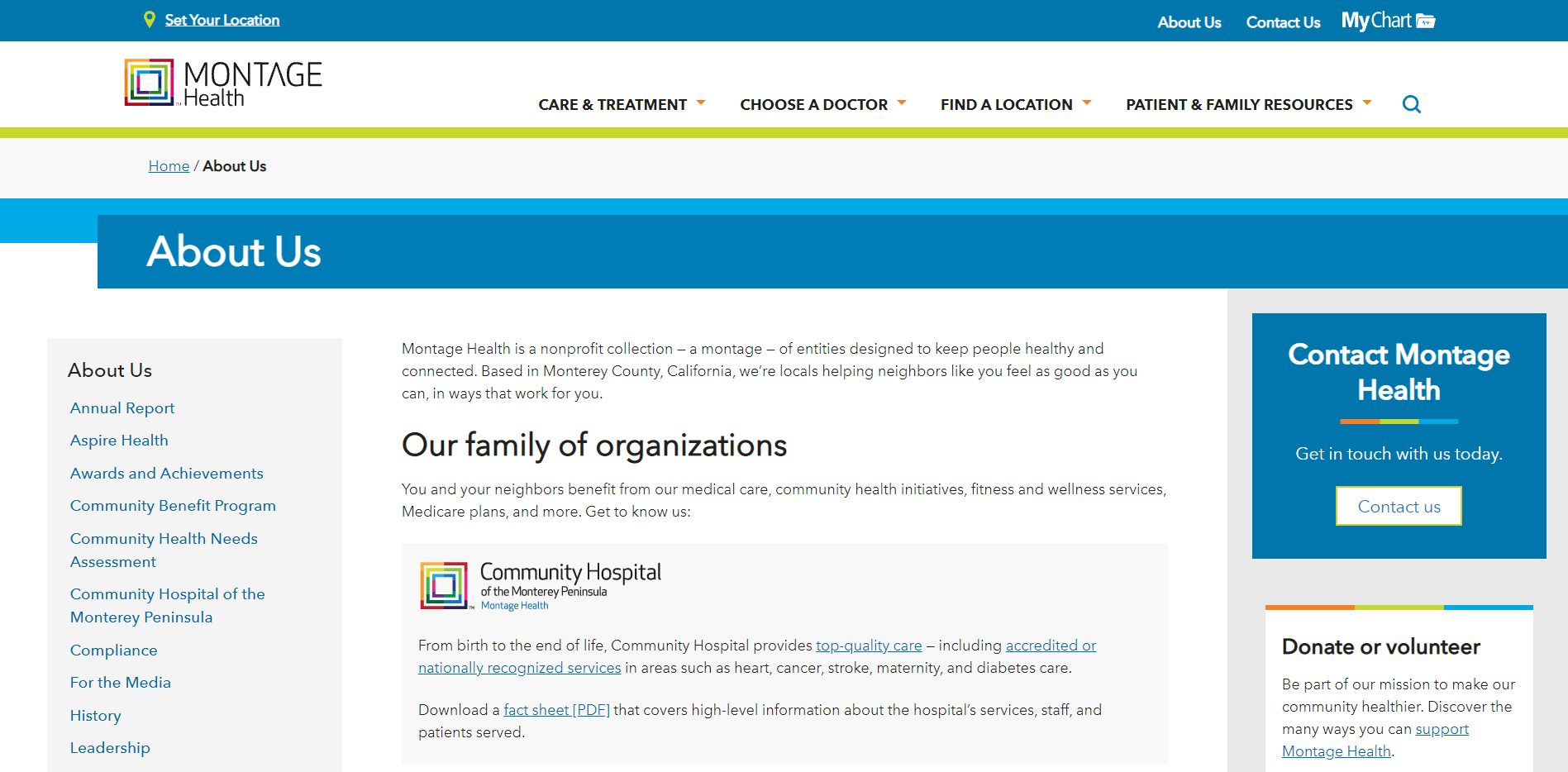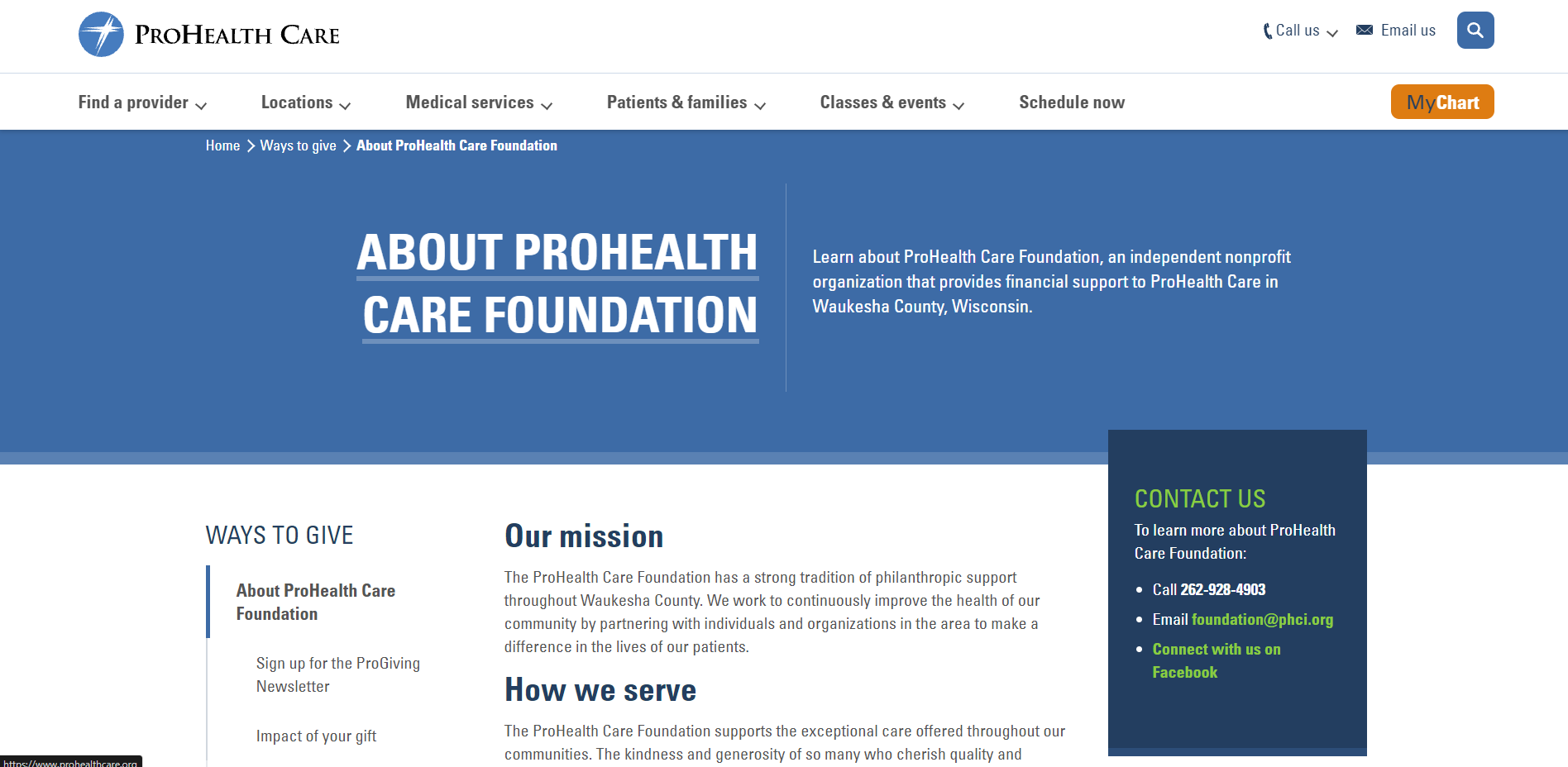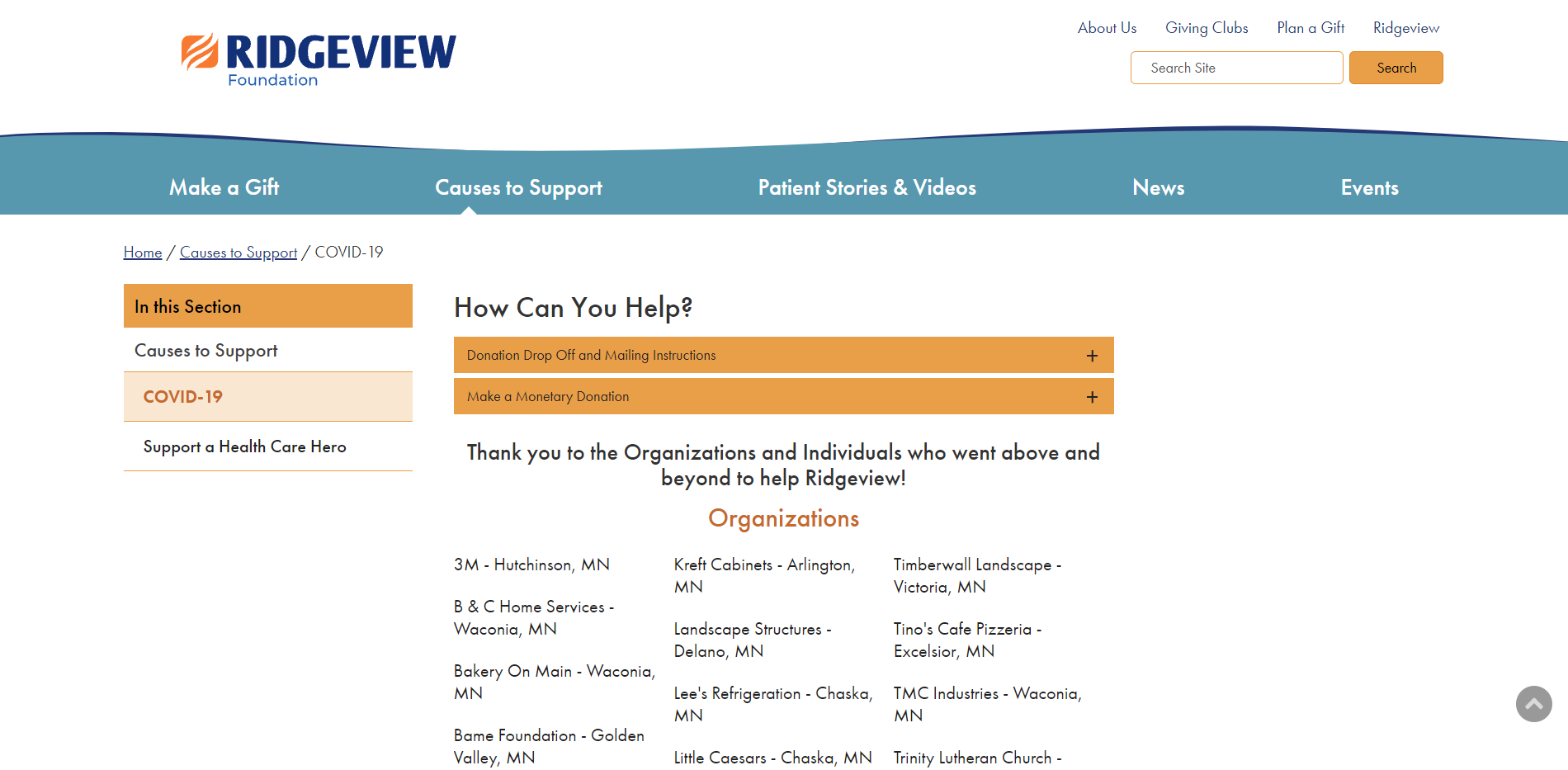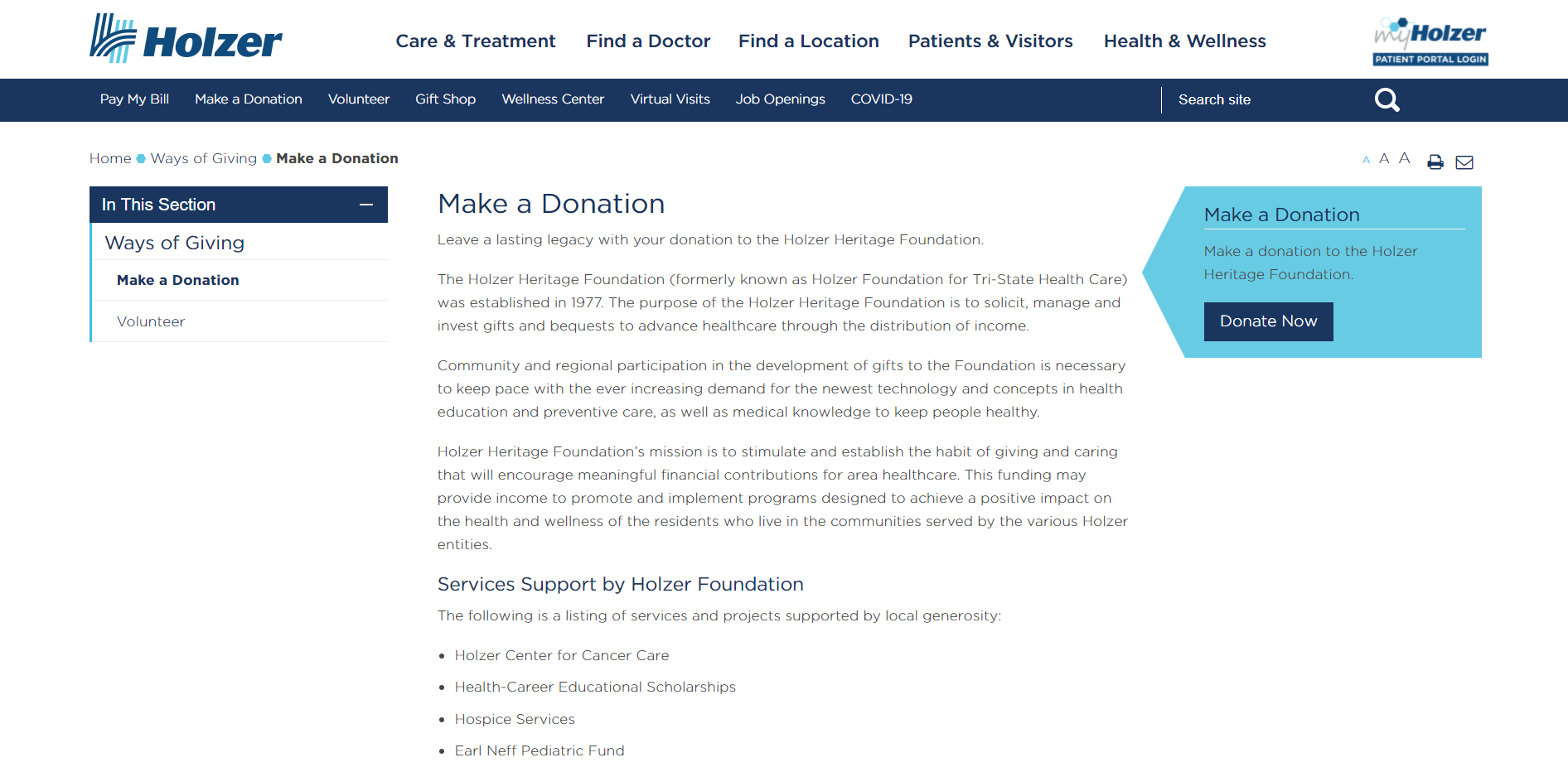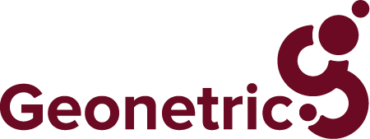Effective healthcare content explains the complexities of a healthcare system, generates traffic, and makes conversions. Web copy can be difficult to structure and develop. But when done correctly, your website benefits from being user-focused, optimized for search and easy for site visitors to take the next step.
What does it take to be award-winning?
Writing effective web content is as much art as science, and our popular guide on Web Writing for Healthcare takes an excellent in-depth look at what it takes to create content your users want. At a high-level, great content:
- Adheres to best practices for readability and accessibility
- Cross-links strategically
- Focuses on the user, particularly your unique personas
- Follows search engine optimization best practices
- Follows the patient journey
- Leverages the right call to action
- Uses the right voice, tone and style
Check out these recent award-winning medical websites that put those best practices to work and received recognition for developing and delivering engaging content.
2021 award-winning healthcare web content
The 2021 content healthcare award winners have all invested in comprehensive web content strategies and development to strengthen their brand and top their competition. Read on for more details.
University Health
As an academic medical center, University Health, in San Antonio and Bexar County, Texas, used personas to guide personalization and content marketing efforts, earning them a Platinum MarCom award for Web Content.
With the redesign goal of making their website more system-centric and easier for site visitors to find the information they need quickly, University Health used:
- Crosslinking strategies to connect services, providers, and locations sitewide
- Strategic drop-down menus in the main navigation
- Sophisticated taxonomy to help users get helpful site search results
- Links in its expanded footer to address secondary audience needs
The new content used personas, created from consumer research and web analytics, to write compelling content for service lines, campaigns and content marketing hub articles. These comprehensive, patient-first pages showcase University Health as an understanding, expert academic health system. This approach aligns with the organizational goal to enhance its brand in the community and highlight its alignment with UT Health San Antonio.
To keep the content user-focus, University Health worked with Geonetric to:
- Create content for University Children’s Health pediatric transplant program and pediatric cancer services
- Develop 78 pages of content for four service lines
- Restructure and write new content to bring the Transplant microsite into the new University Health website
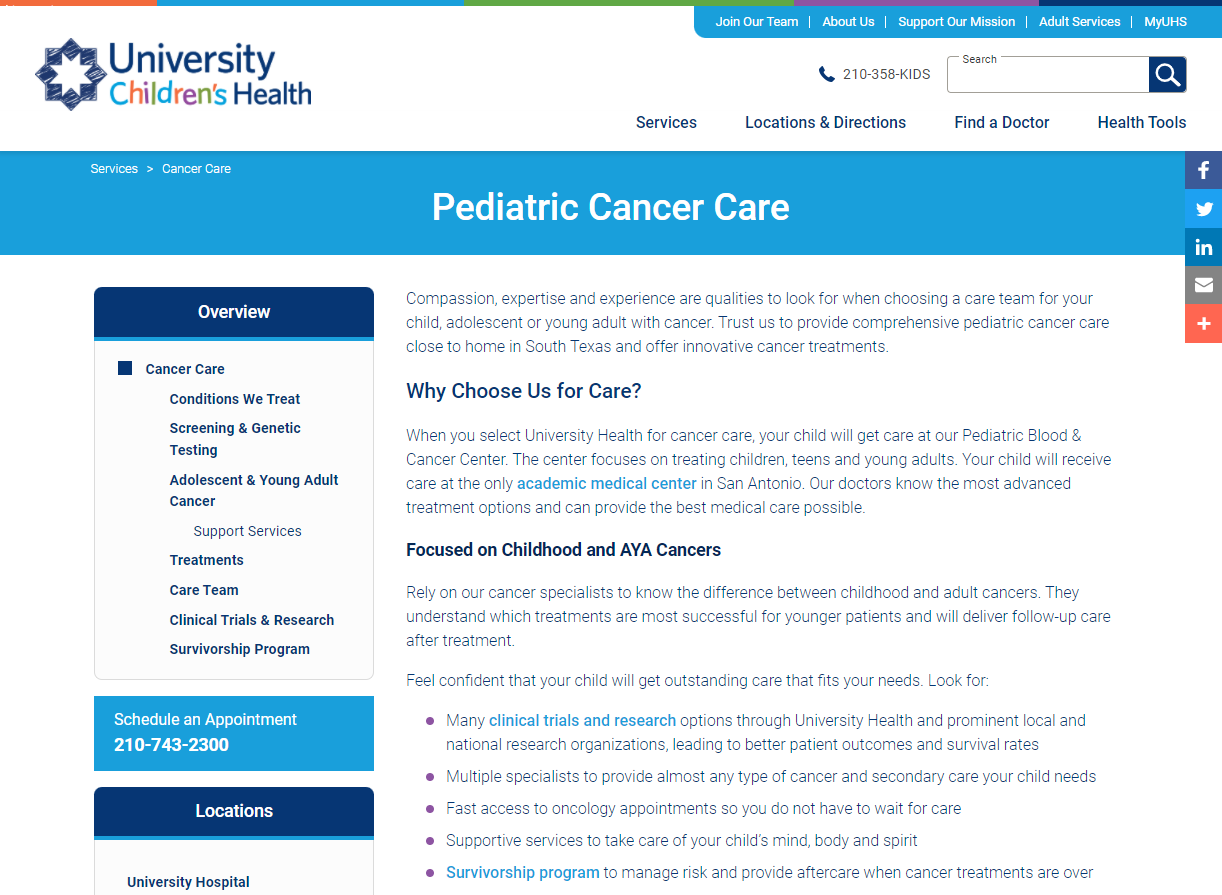
PIH Health
PIH Health’s new website uses web copy to differentiate their growing health system from their competition across Southern California, earning recognition as a finalist for Ragan’s PR Daily Awards, Patient-Focused Content.
Watch this video (8:33) on how PIH Health makes their content accessible.
PIH Health’s investment in content integrates content from two websites for new, search-optimized cancer and heart web copy that follows the patient journey, web writing best practices and PIH Health’s brand guidelines.
Each section has pages on prevention, diagnosis, treatment and follow-up care. This approach follows the patient journey so users can find information relevant to them.
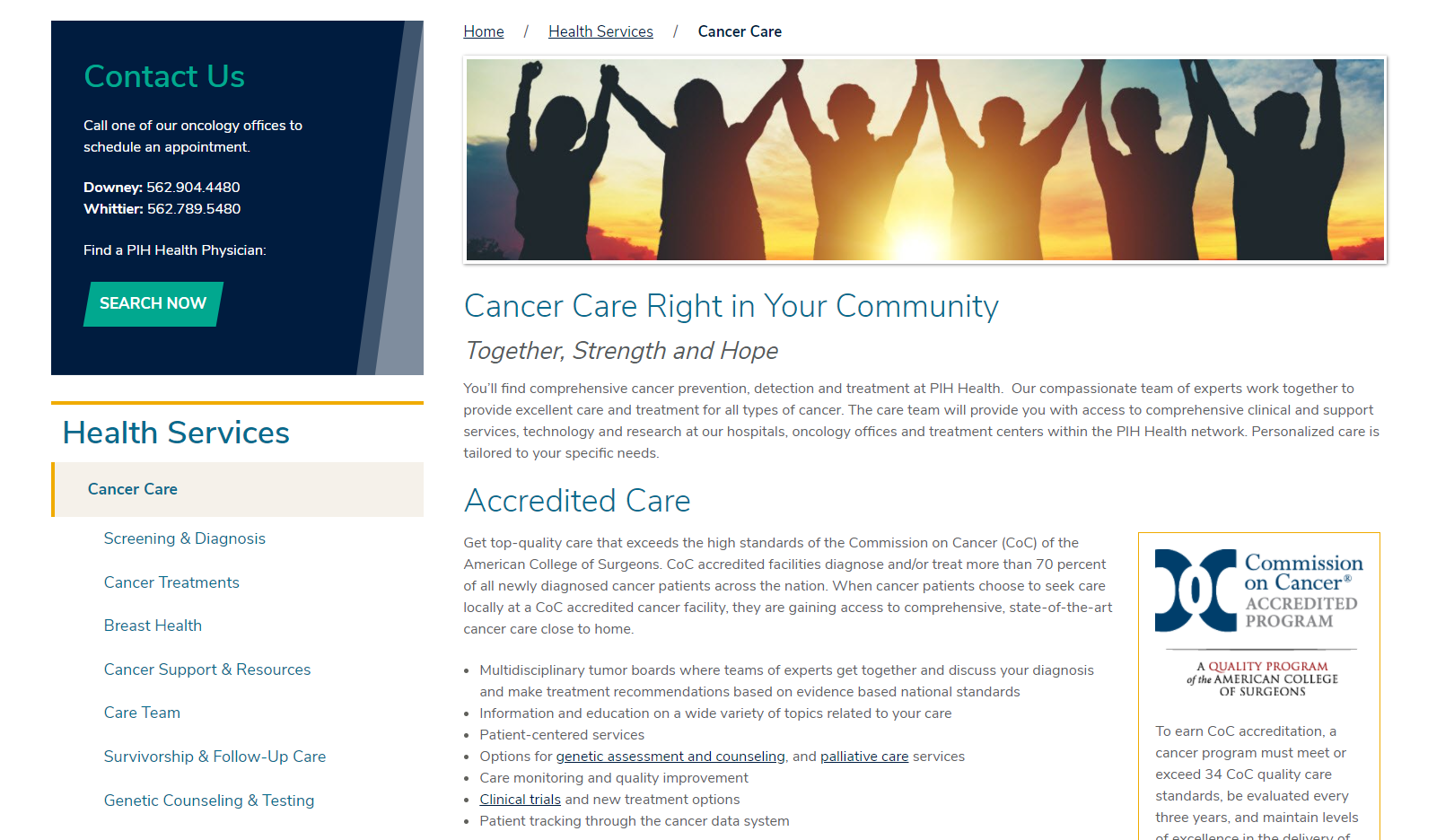
The new content highlights the many reasons patients benefit when they choose PIH Health for care and makes it intuitive for users to take the next step with prominent, easy-to-understand calls to action.
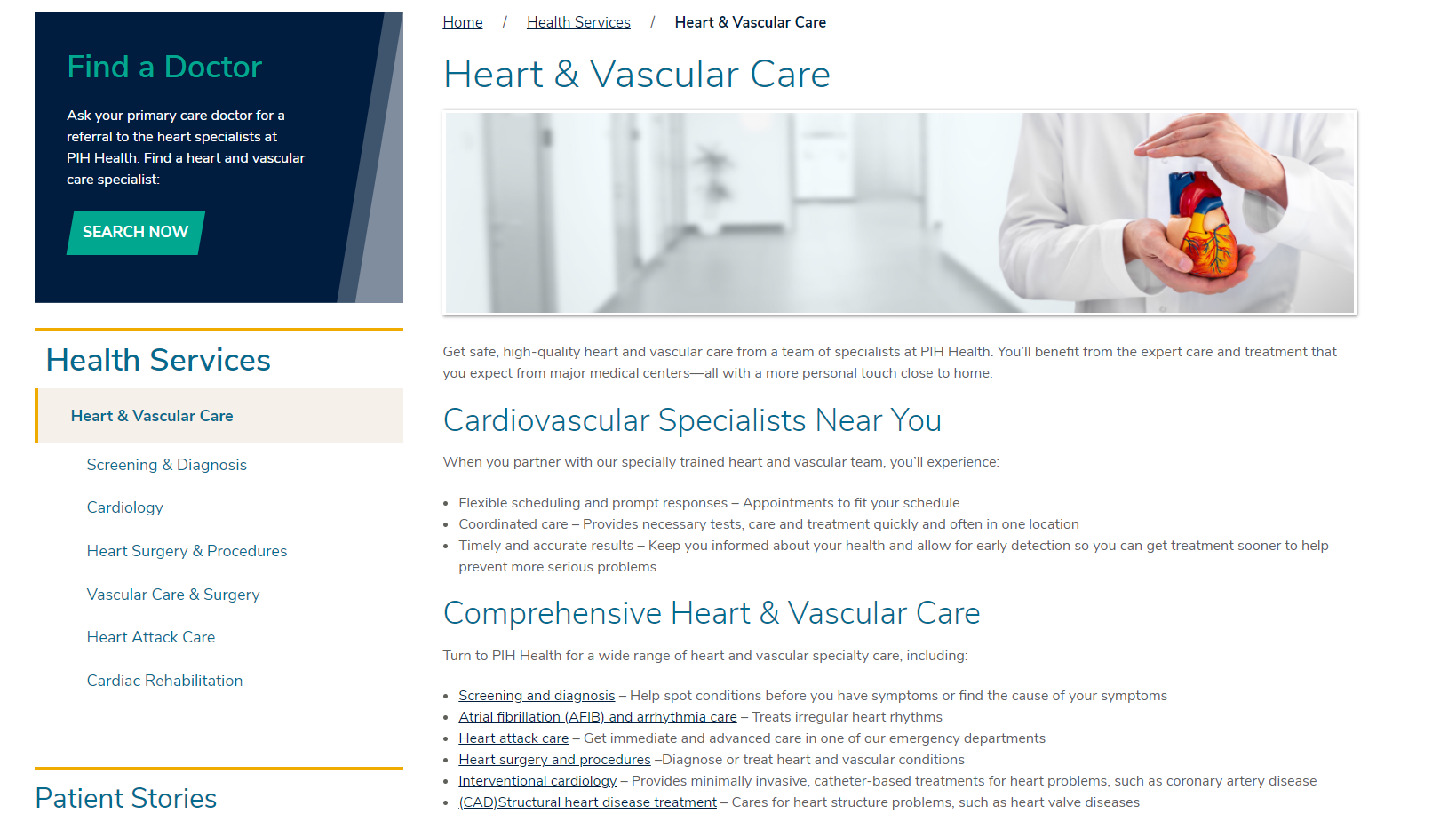
Montage Health
Montage Health, in Monterey, California, developed user-centric copy for its new website, earning them an Honorable Mention MarCom award for Web Writing.
To boost traffic and engagement, Montage Health’s content:
- Adheres to proven web writing best practices
- Answers users’ top questions
- Follows the patient journey
- Uses cross-linking strategy
Montage Health has 420 pages of new content throughout their new site, including:
- 48 service line sections (217 pages total)
- 55 location profiles
- About us section
- Accessibility statement
- For healthcare and professionals section
- Montage Health Foundation section
- Patient and family resources section
In addition to new content, Montage Health took advantage of content governance training and recommendations related to their video and classes and events calendar categorization strategies.
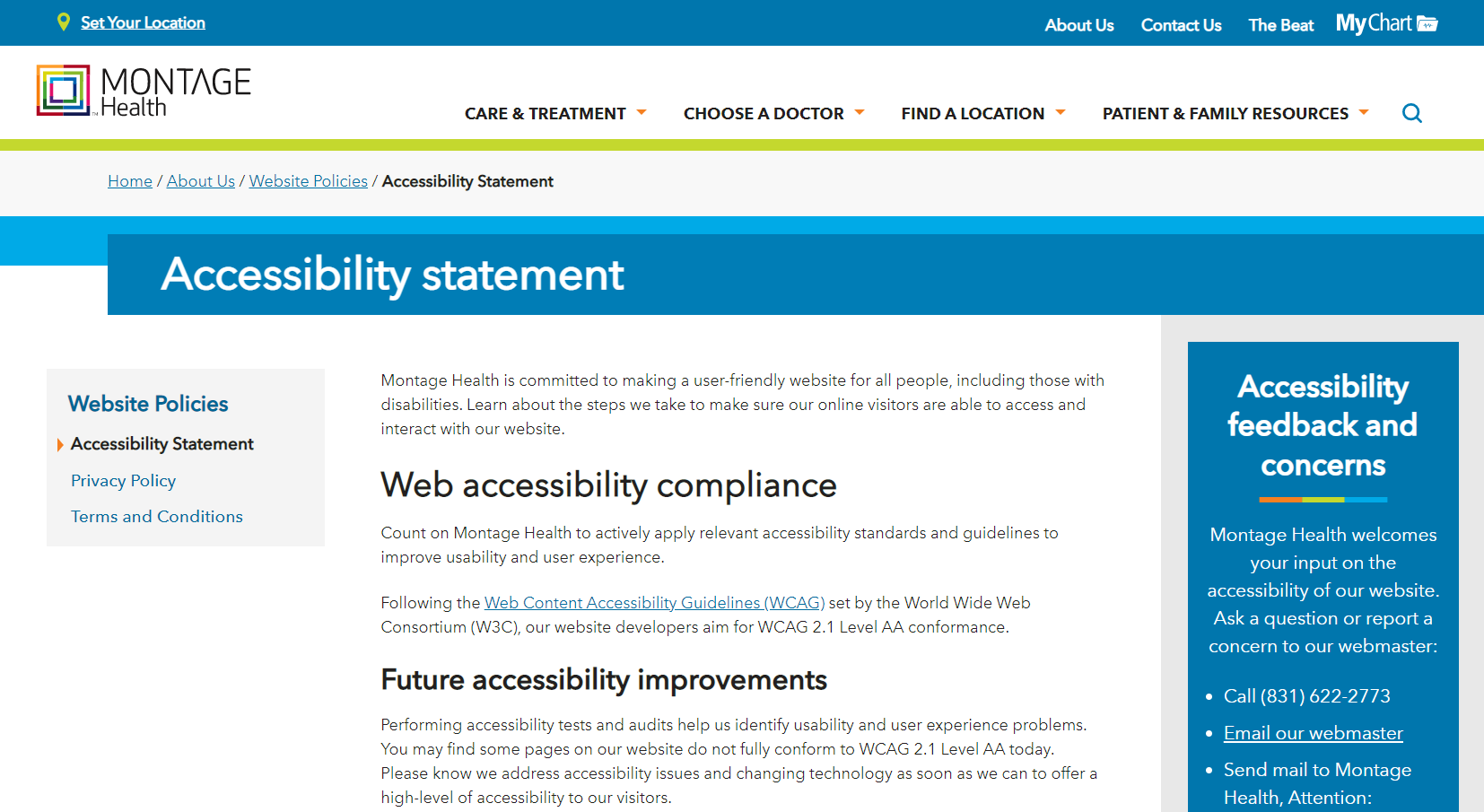
Put the user first, and the accolades will follow
None of these healthcare organizations set out to win healthcare content awards. They approached their web content with the users in mind – enlisting user research, building on personas and following key web writing best practices to tell their story and differentiate themselves from the competition. They also all enlisted the help of an outside content expert – their digital experience agency Geonetric.
Whether you’re re-examining your web content as part of a redesign or as part of an iterative approach to improving your site, depending on the expertise of healthcare copywriters can make the process more effective. Contact us today for a free consult, to sign up for a writing workshop or to outsource your healthcare writing project to our copywriting professionals.

